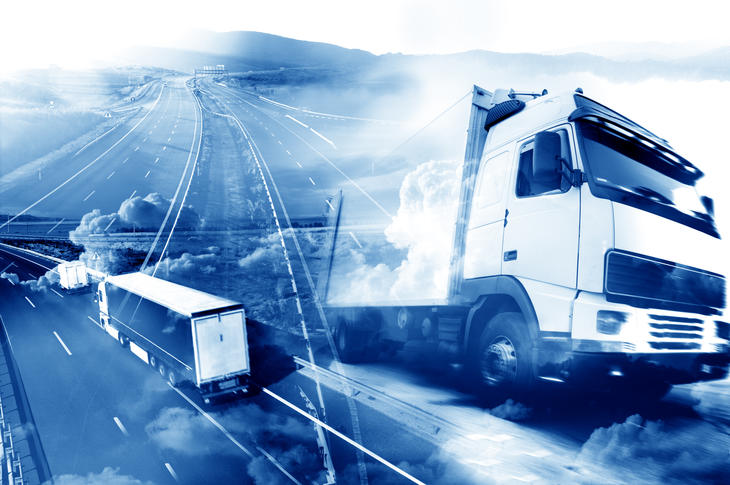Fleet management and mobility

Locus makes mobility easy! This is both our vision and the rule we live by. We supply efficient solutions that create value for our customers and that make day-to-day life easier for mobile workers and management.
Fleet management
The solutions provide an up-to-date status for deliveries, vehicle positions, and expected arrival times with customers. This gives driver managers a better overview and opportunity to use the material available to them, which reduces empty loads.
Having a better overview and more efficient communication with drivers also means that driver managers can manage the planning and and see overviews of multiple vehicles at once.
Tarmac/bulk transport: BulkCargo
BulkCargo manages bulk transport based on a common industry standard. The solution provides an overview and does away with manual procedures in day-to-day operations, including electronic waybills via apps. The drivers use the apps to receive or create tasks, and everything is updated in the web solution in the office. Actual driving data is used to create both a full overview and an invoice basis.
The solution has obvious advantages for the carrier in that the driver office can do away with manual operations and instead concentrate on checking the data that has been entered. However, it is probably the contractor who has the most to gain, as they do not have to invest as many resources in verifying tasks. The contractor’s biggest advantage, however, is the overview they get. The project management team is always kept informed of the transport status, and costs are updated on an ongoing basis.
Track & Trace, status and deviations
As a driver carries out their driving tasks, they report back on what they’re doing. There are several possible status reports for each order that can be easily submitted to the office.
All statuses reported back to the driver office are recorded in the log, systematised, and displayed for each individual order. This information is shown on various reports and online.
Each vehicle can be fitted with a GPS receiver that can determine its position. This position is sent to the driver office at regular intervals so that the office has a complete overview of its resources at all times.
Order and scan on the app
Orders and messages are transferred to the app, or the driver can retrieve orders using a keystroke. The orders are displayed in the correct order for execution, and the app has a flexible layout tailored to specific needs. The app can scan consignment notes and parcel labels.
Electronic consignment notes and route lists for drivers
The driver or carrier can also retrieve pre-planned routes themselves via a scan or route number, without the operator having to be present.
The system sends orders to the driver, or the driver can retrieve orders/routes themselves (using a parcel number, shipment number, routeID, or available routes).
Damage log and signature
The vehicle equipment has a built-in camera that can take pictures of damage to the goods. These pictures are filed in the orders, making them easy to retrieve on request.
Customers sign directly on the app screen and the signatures are stored in the orders.
Goods reception (terminal scan) and documentation of damage
In some places, receipt of goods needs to be recorded on specially adapted scanners. Typically, this may involve recording the receipt of goods at the HUB/terminal and recording any damage to the goods (by photo, for example).
In a CrossDock, the scanners at the terminal can be used to record inbound and outbound goods at the terminal, as well as to print labels for unlabelled goods.
In-vehicle navigation
The app uses the smartphone’s own navigation system, such as Google Maps or Sygiq, which makes it easier to find the next pick-up or drop-off location. The addresses registered are sent out to the vehicle, enabling the driver to easily find their way to their next destination.
Tracking device and GPS positioning
Each device consists of a tracking device with cables, an external antenna for fitting to the windscreen, and a built-in SIM card. It is not necessary to sign up for a mobile subscription for these devices.
One or more devices with a tracking device installed can be displayed on the map simultaneously, and the device can be easily tracked on the map as up-to-date GPS information is received from the device.
If you want to be able to see where a device has been over a certain period of time (trail tracking) or the last 15 minutes, you can easily turn on GPS tracing in the map and see where the device has moved during the given period.
Real-time GPS positioning of trailers also allows for better utilisation of the equipment.
Geofencing
A log can be kept of when a device enters or leaves a specific area.
Printing of packing slips and delivery notes
If necessary, a printer can be used, and the orders/notifications can then be printed out in the vehicle. This may be necessary if the customer wants a receipt, or if you want a receipt from the customer yourself.
Pallet accounting
The systems take care of the administration of replacement pallets, which can be both time-consuming and difficult.
Temperature control
Locus has developed the LinkItAll software for Carrier.
LinkItAll provides temperature data, vehicle positions and times, routes driven, the set-point set by the driver, and the length of time that the doors of the vehicle have been open. The system is web-based and also provides information about the operation of the refrigeration system, as well as where there is a workshop that can provide assistance. There are also alarms for temperature deviations and system downtime.
Find out more about our system designed for Carrier.
Messaging services
The system can send and receive messages from one or more other vehicles. The service is an integral part of the system and, in many ways, works like a regular e-mail system.


